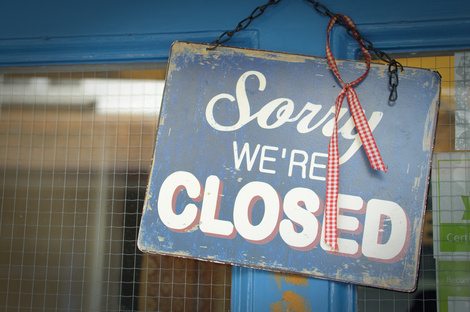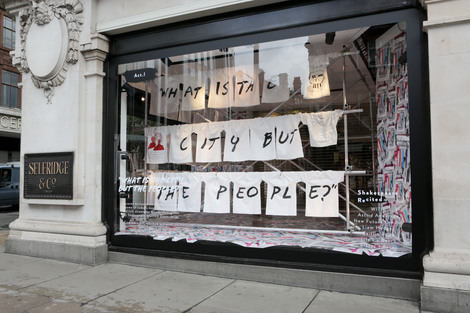Since the rise of online shopping, retailers have feared for the British high street. Still, even in the face of negative speculation, high street retailers have persevered.
A new report from the Local Data Company released today found 20,804 shops opened in the UK between January and the end of June, down 15 per cent on the second half of 2015.
According to the LDC, concerns over Brexit and the wider global economy may be to blame for the drop in new store openings in a period traditionally associated with growth.
Exacerbating the issues is the fact that closures have outnumbered openings by 1,997.
Bricks and clicks: retailers need to fire on both cylinders
Research last year revealed that consumers still prefer the real-world shopping experience over the convenience and immediacy of online retail. According to the Digital High Street Advisory Board, investing in the technology to engage with customers is vital for high street stores, supporting research from Rackspace which showed how businesses need to do more to inspire customers when they visit their online shop.
While there is no doubt that online shopping has made things cheaper and more convenient, websites are still missing out to bricks and mortar shops because they are failing to inspire ‘browsing’ shoppers. For one thing, a third of shoppers will give up browsing a website after just 10 minutes if they can’t find what they want.
And more tellingly, over a third see shopping in brick-and-mortar stores as a way to find inspiration, suggesting it to be a more organic, social experience than the immediate and necessity-based process online.
This is why high-end luxury stores and high street substitutes have invested in immersive store fronts and proprietary scents in-store.
As surmised by The Cambridge Satchel Company founder and CEO, Julie Deane, “e-commerce is important but it’s hard to get that amazing leather smell online.”
Even UK retail behemoth Primark is experiencing slow sales, mostly because of its lack of an e-commerce platform.
“With more and more consumers turning to the web for their shopping, brands must ensure their internet offering is as efficient as possible, or risk missing out on an important number of sales,” comments Ken Johnstone, co-founder of scanning technology developer, Quikkly.
According to Johnstone, trends in the retail sector are showing that convenience is king – not price – and today’s consumers want the convenience of “on –demand shopping” in the real world too.
“Online shopping in particular has transformed people’s expectations – we are now accustomed to being able to order anything, anytime, anywhere, with the click of a button. Any delay – whether that be queues in-store, limited time windows for delivery or lack of stock make us increasingly annoyed and likely to give up on a potential sale.”
Experts believe that retailers need not view sales in binary: online vs. offline.
A high street presence is crucial, even for online businesses, in engaging with customers. Similarly, high street retailers absolutely require an online presence to capture the growing number of online-only shoppers, explains Fujitsu’s MD of retail and hospitality in the UK and Ireland, Rupal Karia.
“It is essential therefore to have seamlessly integrated channels that flow from the shop floor to the back end systems through to the online store. This will enable customers to move freely from one to the other during their shopping experience and shop the way they wish in this new digital age.”

For others like David Saenz, UK MD of delivery firm, Stuart, it’s a matter of giving consumers what they want. Consumers, given the right delivery options, are willing to spend £4.9bn a year more with their favourite high street retailer online, he says.
“While it’s easy to suggest (brick-and-mortar retailers) lost out simply because they couldn’t compete on price, there is something else is driving consumers’ shopping decisions: a growing desire for convenience and speed.”
“And so we have a growing disconnect between what the shopper of today expects and what their favourite high street retailers are able to deliver. One which is increasingly impacting the high street’s ability to expand. But this isn’t rocket science,” Saenz adds.
With a background in delivery, Saenz sees the value in what he terms the “all-important last mile’ in the customer journey. “Many high street brands have managed to master almost every element of the online customer journey. All except for one: delivery,” he explains.
“Convenient delivery is nothing new, but for one reason or another the high street has yet to catch on. This needs to change. For those that do, there is a huge opportunity available. The message is clear to retailers, modernise or face extinction.”







